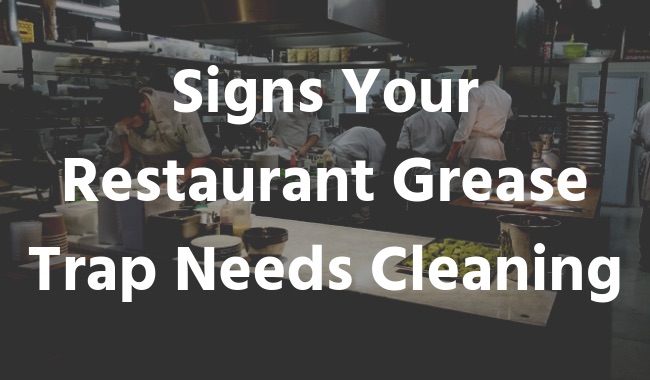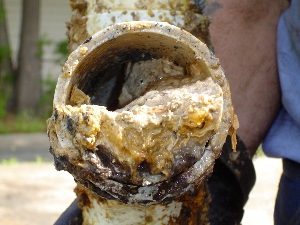
If you own a busy commercial restaurant in North Carolina, then you’ve probably had your fair share of grease-trap related experiences.
Often, these experiences are not good. One big reason for that is maintenance. A poorly maintained grease trap can lead to a lot of issues.
- Drainage clogging.
- Unpleasant Odors.
- Increased fire risks.
- Lost revenue due to closure.
- Health issues for your staff members and customers.
- Not to mention the high repair costs that follow.
In order to avoid any of these issues, you must maintain your grease traps regularly.
So, when did you last properly clean your traps? Are you wondering: how often should a grease trap be cleaned? Or better yet, what are the signs that it is time to schedule a grease trap cleaning?
Well, this post covers a few common indicators that you'll want to clean your trap. If you find yourself dealing with one of the following, seriously consider hiring a professional grease trap cleaning service.
5 Signs Your Restaurant’s Regular Grease Trap Needs Cleaning
Everyone enjoys saving money, and business owners are no exception. One great way to save is to ensure you consistently care for your grease trap. That means cleaning them before or as soon as you start to notice the following signs.
1. When the drainage is backed up or slow-moving.
If you ask any grease trap expert, they’ll tell you that poor grease trap upkeep is the main causes of clogged sink drains. So, why does this happen?
As fats, oils and greases (FOG), or even food waste, accumulate in your grease trap they start to solidify. Often, over time, the trap starts to get full of dense grease.
Normally, when you look into the trap you can see into it, however, when the trap is full excess grease stiffen at the top, forming a cap.
With all that grease and dirt buildup it becomes hard for water to flow through the sink drain, leading to slow waste movement.
Backed up drains can lead to many other problems. Worst case scenario, it can result in you temporarily closing your business.
So, if you notice that it’s becoming a bit more difficult for water to drain down your drainage system, you'll want to get your grease trap and drains cleaned a.s.a.p.

2. When grease is 25% or more the total liquid depth.
Experts recommend that your grease trap is cleaned if the solids and grease are more than 25% of the wastewater depth. It’s at this range that professional grease trap cleaning is both economical and unchallenging.
If the container is filled with a surplus of fats, oils, and greases (FOG), important processes and functions may get interrupted or slowed down in your kitchen.
In fact, cleaning grease traps that are 25% full is an EPA rule; for health and safety reasons.
To prevent surpassing the minimum, you should establish a concrete grease trap maintenance checklist. If not, you’ll be left with a lot more problems.
3. When there’s a foul smell coming from the kitchen.
Unexplainable odors are often a clear indicator of a grease trap that requires cleaning. These are the smells that don’t disappear, even after you take out the garbage or clean the commercial kitchen.
Grease trap smells are often the result of the accumulation of used cooking oil, food waste, sludge, solids and grease over a long period of time.
Therefore, if you notice a stench that doesn’t seem to leave even after you eliminate every possible cause, you should consider cleaning out your grease trap.
4. When it’s simply been too long.
Sometimes, the only sign you need is time. So, when was the last time you got your grease trap cleaned in a proper way?
If you have trouble remembering or it’s been more than three months (90 days), then it may be time to have it cleaned.

Best practices dictate that grease trap cleaning should be done at least once every three months. However, if you run a busy restaurant, you may have to clean it more frequently; once every month.
By doing this, you not only avoid grease-trap-related issues, but you also operate your kitchen within the EPA and Health Department standards for grease trap cleaning.
5. When you find grease in unusual places.
Lastly, the presence of grease around your kitchen is often a sign that your trap needs to be cleaned.
You might be wondering, “how could that possibly happen”?
Well, if your grease trap clogs, the extra grease may be forced to escape through the easiest exits. That may include sinks, sewer pipes, water lines, and so on. And when that happens, you’ll have grease in every wrong places.
Therefore, if you notice this sign, you should check whether your grease trap is the cause. If it is, then you’ll want to clean it; as well as any place where grease deposits are found.
Generally, keeping your grease traps in good health is beneficial to you. You won’t have to worry about bad odors or risking your employees/clients’ health.
Moreover, grease trap maintenance is always cheaper than repair. Backed up grease traps can close down your North Carolina commercial kitchen for days. That means losing good clients and revenue. Not to mention the fact that it’s always an expensive fix.
In summary, don’t take any chances. Make sure you clean your grease traps at least once every three months and do so properly. If not, fats, oils and grease will begin to accumulate.
If you don’t have the necessary tools or skills, you may need help! Consider hiring a professional grease trap cleaning company's services to do it for you. We can work with you one on one and offer you professional services to clean your grease traps! Contact us today to learn more about our services.